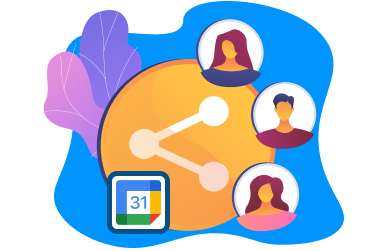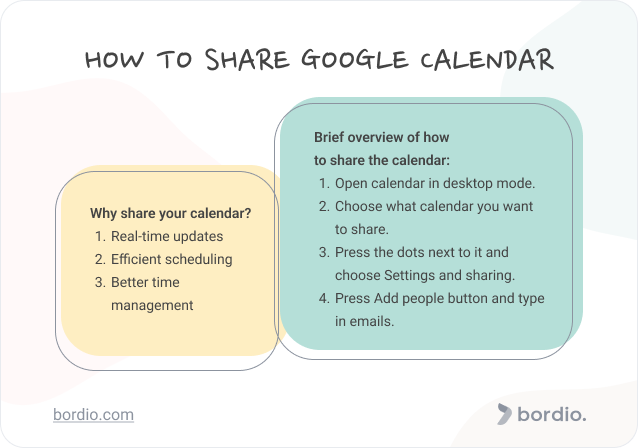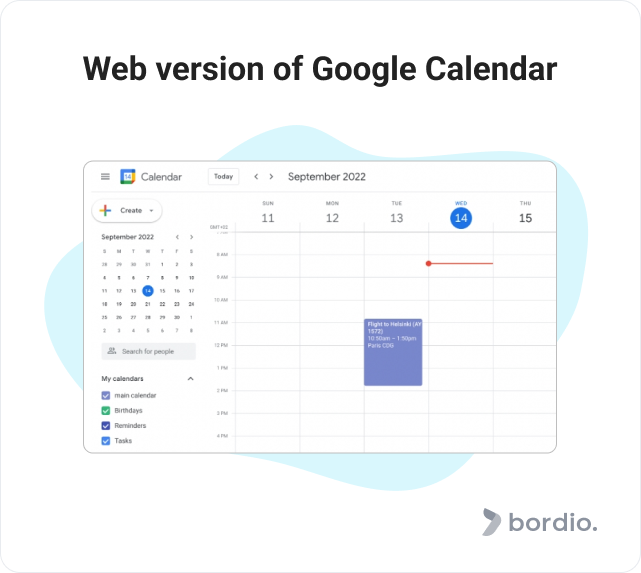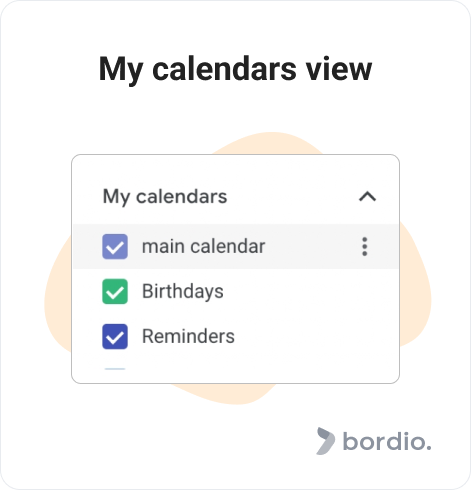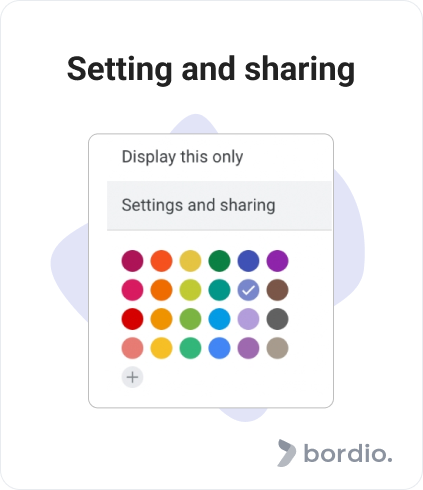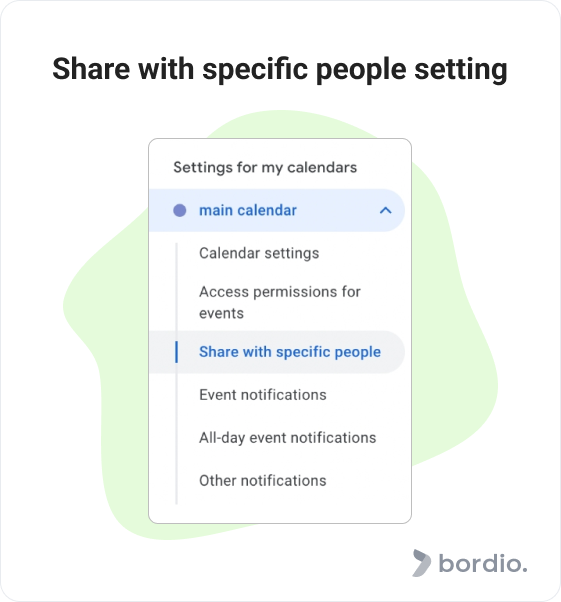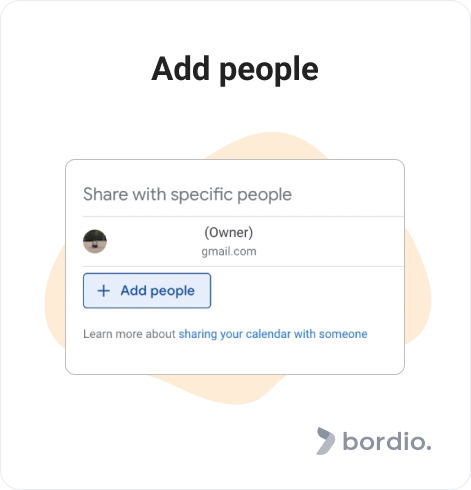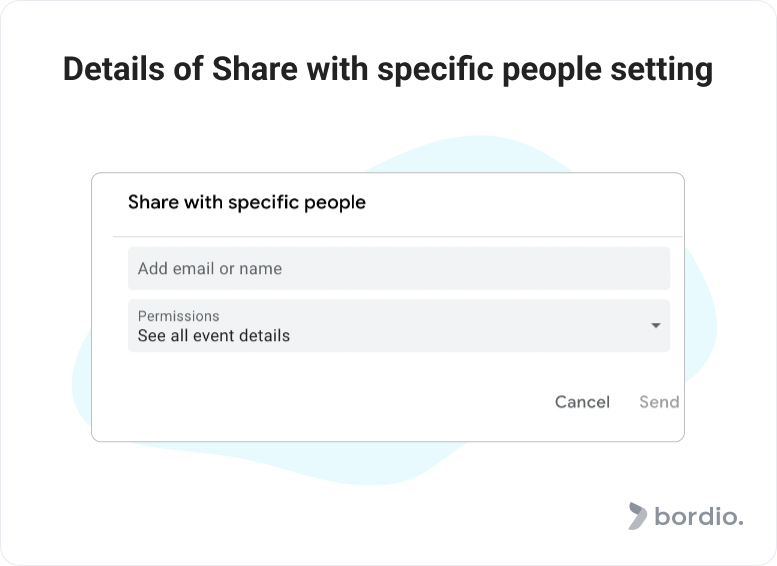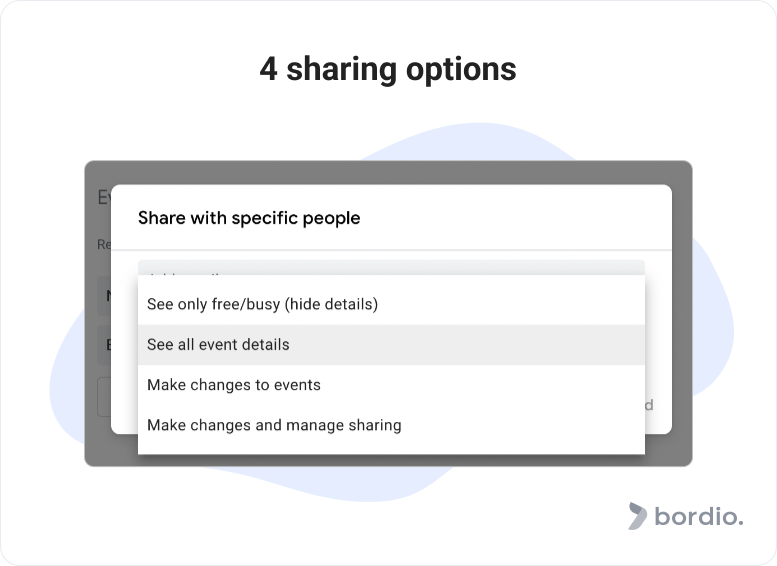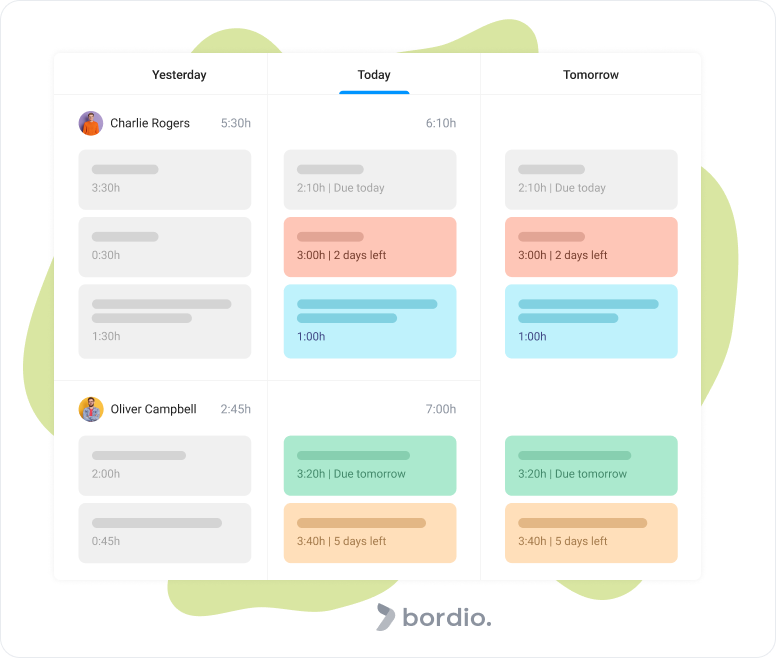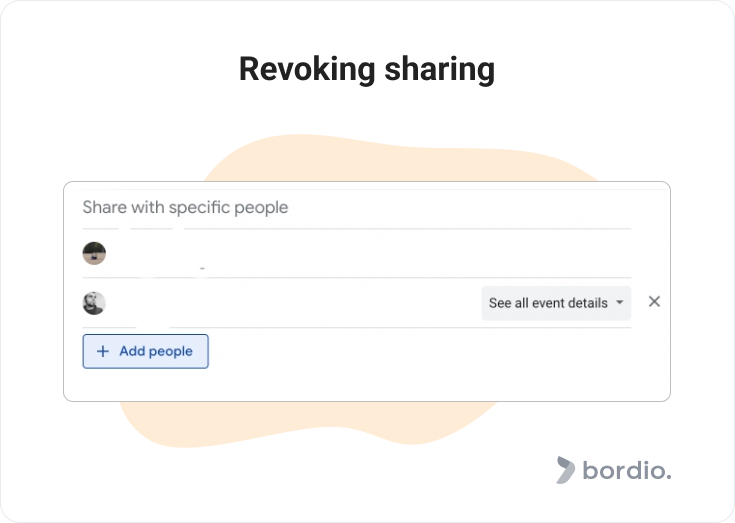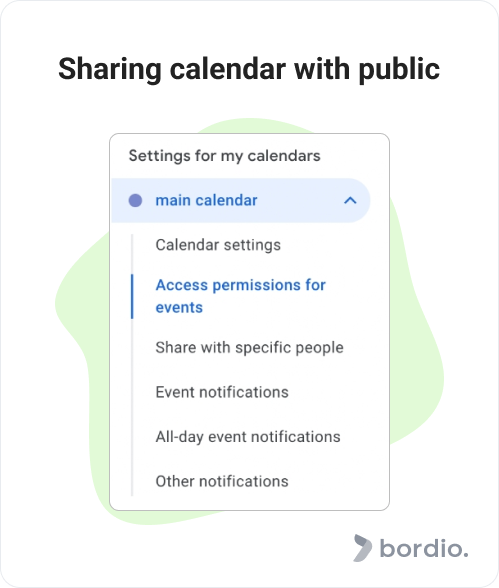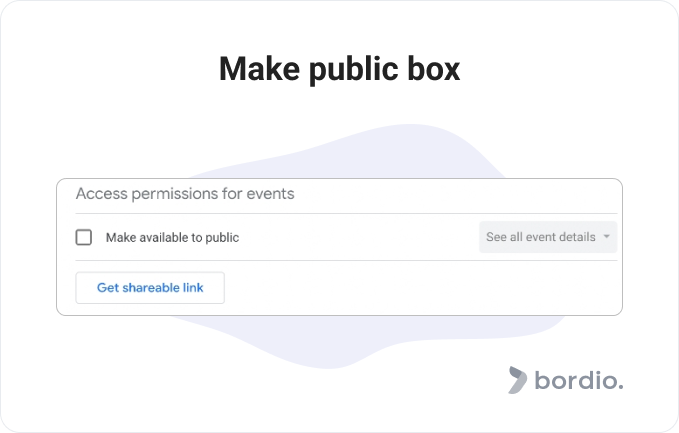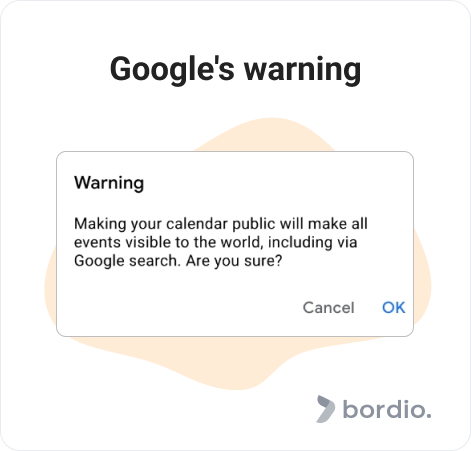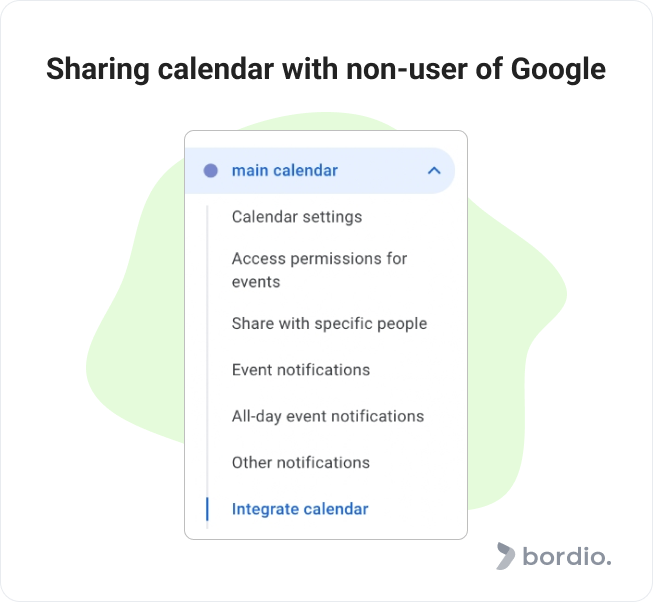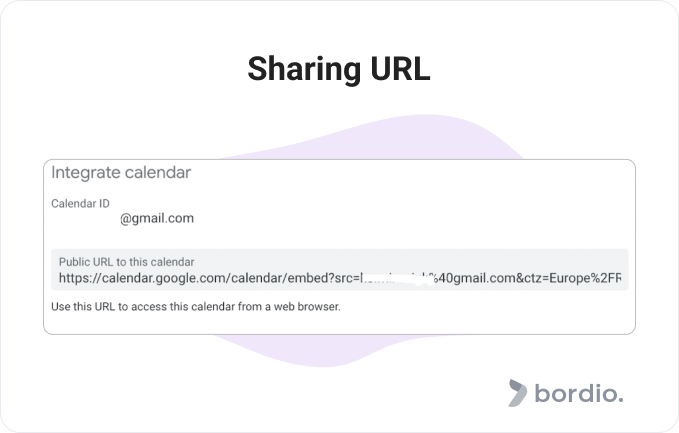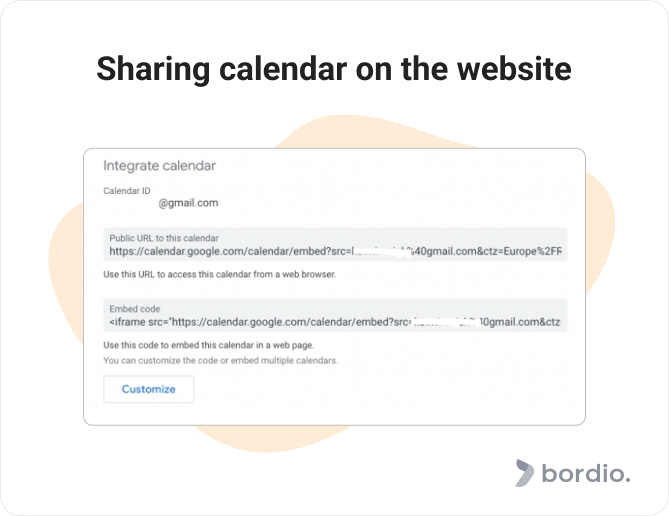In today’s guide, we will tell you about all Google calendar sharing and what to watch out for as you’re doing it.
By the way, we’ve already covered How To Delete Google Calendar in one of the previous guides, so make sure you have a look if you have one too many calendars created.
TL;DR
We recommend reading through the full article to make sure you learn all the nuances and tricks for sharing your Google Calendar. However, if you are short on time, here is a brief summary.
Step 1: Open Google Calendar in desktop mode.
Step 2: Choose the one you want to share, press three vertical dots, and click Settings and sharing.
Step 3: Choose Share with specific people in the calendar and press the Add people button to type in emails and choose permission levels.
Sharing your Google Calendar
It’s not hard at all to share your Google Calendar with someone, so if you’d like to do it, here is a step-by-step guide.
Tip: If for some reason you are unable to share your Google Calendar that you use for work, please check if there are any system restrictions imposed by your employer.
Step 1: Open the web version of your Google Calendar
Android and iOS apps don’t support the sharing feature, so you’ll have to use the web version for that.
Step 2: Select the calendar you’d like to share and click on the three vertical dots near it
You’ll get two options, choose Settings and sharing:
Choose Settings and sharing.
Step 3: Settings
As you click the Settings and sharing option, you will be redirected to Calendar settings. Here, press the down arrow and select Share with specific people from the drop-down menu on the left, or simply scroll down the section.
Step 4: Sharing the calendar with someone
The sharing setting is very basic and straightforward.
You can click the Add people button and share the calendar with as many people as you’d like.
Tip: Make sure the people you shared your calendar with click on the link in the email that is automatically sent by the system. If they don’t, they won’t be able to view your calendar in their Google Calendar app or web version.
Step 5: Choosing permissions
In addition to choosing who to share the calendar with, you can also choose the level of permissions that every person has.
There are four options in total:
The default setting that Google assigns (unless you custom choose it) is Make changes and manage sharing.
You can choose different levels for different people to ensure you are still in control of your calendar and there are no accidental changes to it because someone clicked the wrong button.
So, for example, if you’re a manager, you might want to provide See only free/busy to your team and hide details. However, as a linear team member, you can choose the See all event details. The Make changes to events setting is perfect for someone you partner up with for work.
Let’s say you are a systems engineer who attends client meetings together with a salesperson. Because your schedule depends largely on those client meetings, and you are rarely actively involved in scheduling them, it makes sense to share rights with the sales team, so that they can add, remove, or edit events in your Google Calendar.
By the way, Bordio calendar is the best pm tool that allows everyone in the team to see each other calendars’ automatically. On top of that, users can see the total workload of someone for the day, week, or month. With transparency like that, everyone on the team is inclined to do their best and can understand others’ work processes better too.
Tip: Revoke access for someone by deleting their email address from the list in the permission settings by clicking the X on the right side.
Step 6: Sharing the calendar with the public
You might want to share your Google Calendar with anyone and everyone, for example, if you run public events or online streams.
In that case, go back to step 2 where we choose the calendar we want to share, and click the Settings and sharing option.
In the settings, go for Access permissions for events:
There, tick the Make available to public box.
As you make your Google Calendar public, the system issues a warning to ensure you fully understand what it means to have a public calendar. For example, many users don’t realize that their calendars and event details can be searched online.
We don’t recommend making your primary calendars public for the sake of personal safety and protection against scams.
Step 7: Sharing the calendar with non-user of Google Calendar
Although it seems like everyone on planet Earth uses Google Calendar, it’s actually not true. And if you need to share your calendar with a non-user, worry not! There is a way, and we’ll show you how to do it now.
Select the calendar you’d like to share, click on the three vertical dots, and choose the Settings and sharing option.
In the setting, click Integrate calendar on the left menu or scroll down.
There, you’ll have the option to share the public URL to your calendar which you can then send to your friends, colleagues, or anyone else. Make sure you don’t post this shareable link on social media, even if you have a small following.
Step 8: Sharing the calendar on a website
For advanced users, there is an option to embed the code to the calendar on a web page. This can be useful if you are a professional who people make appointments with on a regular basis, for example, a freelance project manager with a busy schedule.
To share the calendar on your website, stay in the Integrate calendar section of the settings and copy the link from the second option called Embed code.
Why share Google Calendars
If you’ve stumbled upon this article by accident and are not sure why you need to share your calendar with someone, to begin with, here is a brief overview of the key benefits of doing so.
In short, by sharing your calendar you get:
- Real-time 24/7 updates
- Efficient scheduling
- Improved time management
Work-related benefits
Here are the key benefits for your work life that Google calendar sharing can provide:
#1 Smarter collaboration
Having access to someone’s calendar and granting access to yours means sleeker group meeting scheduling, better vacation planning, and appropriate task assignment. For example, you can collaborate with a team time planner by Bordio.
#2 Team management
If you are in a leadership position and work as a project manager, you need access to your employees’ calendars. That way you can non-intrusively check on their performance, track potential burnouts, and identify those with a low workload. This will be good for your project management skills.
#3 Transparency with management
If you are in a linear position at your company, sharing an online calendar often means spending less time explaining what you’re doing. Your boss can see exactly what you’re up to and not question your productivity or efforts.
By the way, with a calendar in Bordio you can be even more transparent: specify how much time an activity takes and also create time blocks for working on your current task. And also it will be useful for you to try simple task tracker by Bordio.
#4 Fewer back and forths with scheduling
No more having to send 20 emails before you can agree on a suitable time for a meeting.
Personal life benefits
But if you think you will only improve your work life once you share a Google calendar, you’re wrong. Personal life can also be made better, and here are a couple of examples.
#1 Planning with friends
Have you ever tried planning a vacation with other adults?
In theory, everyone is happy to do things and travel, but in reality, agreeing on dates and destinations can be the most difficult thing you have to go through in your life.
Having your calendars shared in a group means you can have a designated trip planner who can work with the timeframes when no one’s busy.
#2 Better time management for a better life
When you log events and tasks in Google Calendar, you need to specify their start and end time. If you do this diligently, with time you can have a pretty accurate picture of where your time goes.
